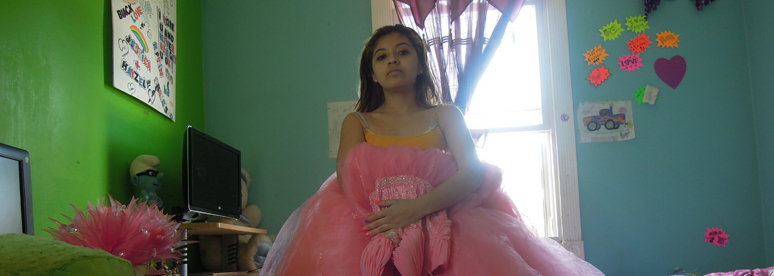UPCOMING EXHIBITION

2 Museums, 2 Nations, 1 Identity
El Salvador & DC: 2 museums and 2 communities connected through art
May 30 - June 13, 2012
AMA ׀ Art Museum of the Americas
201 18th Street, NW
Washington, DC 20006
Hours TUE-SUN | 10 AM-5 PM
ABOUT THE EXHIBIT
Photography, video and paintings resulting from an ongoing exchange project with young participants from rural Salvadoran towns and those of Salvadoran origin and their classmates living in Columbia Heights, Washington, D.C.
The exhibit explores the role of museums in global community-building, innovation and exchange.
ABOUT THE PROGRAM
Art for Social Change is the guiding principle of AMA | Art Museum of the Americas of the Organization of American States. This is reflected in AMA’s bi-national project targeting at-risk youth in El Salvador and Washington, D.C. The project is made possible by Museums and Community Collaborations Abroad program, an initiative of the U.S. Department of State’s Bureau of Educational and Cultural Affairs and administered by the American Association of Museums. For just under a year, Two Museums, Two Nations, One Identity has explored through art themes of migration, bilingualism, community, family, and cultural heritage. The program emphasizes the importance of museums as places of learning and community-building.
The exhibit is the closing event of the joint effort between AMA and MARTE | Museo de Arte de El Salvador, and features photography, video, and collages by youth aged 12-15 taking part in an initiative linking young people from rural Salvadoran towns with those of Salvadoran origin living in the Washington, D.C. area.
The exhibition will showcase original collages, video and photographs that participants made during the span of the program.
Participants have related their experiences with one another through Edmodo, an online social media platform developing connections and friendships between those in D.C. and El Salvador.
The participants in El Salvador are from the towns of Intipucá, Sensuntepeque, Chirilagua and Ciudad Victoria- towns all known for migration to the D.C. area. In D.C., participants live in Columbia Heights, a diverse neighborhood that has maintained a strong Salvadoran population since the 1960s.
The program in El Salvador has taken place in Casas de la Cultura, government-administered centers that promote cultural and artistic activities and a strong sense of local heritage. In D.C., AMA drew from the Art + Media House of the Latin American Youth Center (LAYC) in Columbia Heights, an organization serving low-income youth and families.
Salvadoran-American artist and Corcoran Professor Muriel Hasbun has served as lead artist and curriculum advisor for the project. Hasbún and a group of Corcoran College of Art + Design students, in collaboration AMA and the LAYC facilitated the workshops in Washington, D.C. Artist and teacher Guillermo Araujo and photographer Sandro Stivella worked with the students in El Salvador.
In-progress exhibitions have already taken place at the Corcoran’s Gallery 31 and White Halls during FotoWeek DC in November 2011, with generous in-kind support by Nikon, and at the LAYC’s Art and Media House in December 2011.
The program, the first of its kind between AMA and another museum of one of the thirty-four OAS member countries, engaged underserved youth through art and museums and builds on the OAS efforts to promote the values of peace, democracy, and development. It is also a key component in its outreach to young people, which first began at AMA with the OAS Youth Orchestra Program that provides musical equipment and after-school instruction for underserved youth in the Caribbean.
PARTICIPANTS
AMA | Art Museum of the Americas, Museo de Arte de El Salvador (MARTE), the Latin American Youth Center (LAYC), Casas de la Cultura, and the Corcoran College of Art + Design
SUPPORTERS
U.S. Department of State's Bureau of Educational and Cultural Affairs and its Museum & Community Collaborations Abroad (MCCA) program, the American Association of Museums (AAM), Furthermore, Secretaría de la Cultura de la Presidencia de El Salvador, and Nikon

